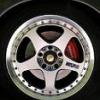Turbo timers??? how long?
Announcements
-
Similar Content
-
Latest Posts
-
Welcome. As the old saying goes, there's no replacement for displacement(except boooooost!) The 3.7 v6 has a lot of capacity over the 2.5 straight 6. Add forced induction and will definitely add to the fun factor. But, probably not going to be a cheap exercise. I'm sure you will have a fun journey either way.
-
Welcome. Very nice looking wagon. Glad to hear others are appreciating the forum over FB. I find it so refreshing that its not the same 4 questions on repeat and your question doesn't get buried in people's feeds within 5 minutes.
-
Welcome. So, more for teaching general maintenance or modifying? If modding, what's in the plans?
-







Recommended Posts
Create an account or sign in to comment
You need to be a member in order to leave a comment
Create an account
Sign up for a new account in our community. It's easy!
Register a new accountSign in
Already have an account? Sign in here.
Sign In Now